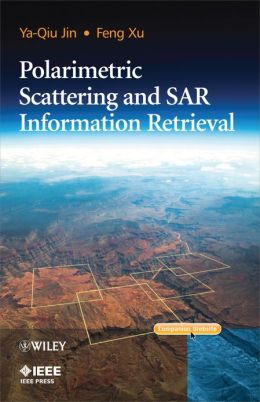 [内容简介]
[内容简介]
Taking an innovative look at Synthetic Aperture Radar (SAR), this practical reference fully covers new developments in SAR and its various methodologies and enables readers to interpret SAR imagery
An essential reference on polarimetric Synthetic Aperture Radar (SAR), this book uses scattering theory and radiative transfer theory as a basis for its treatment of topics. It is organized to include theoretical scattering models and SAR data analysis techniques, and presents cutting-edge research on theoretical modelling of terrain surface. The book includes quantitative approaches for remote sensing, such as the analysis of the Mueller matrix solution of random media, mono-static and bistatic SAR image simulation. It also covers new parameters for unsupervised surface classification, DEM inversion, change detection from multi-temporal SAR images, reconstruction of building objects from multi-aspect SAR images, and polarimetric pulse echoes from multi-layering scatter media.
Structured to encourage methodical learning, earlier chapters cover core material, whilst later sections involve more advanced new topics which are important for researchers. The final chapter completes the book as a reference by covering SAR interferometry, a core topic in the remote sensing community.
- Features theoretical scattering models and SAR data analysis techniques
- Explains the simulation of SAR images for mono- and bi-static radars, covering both qualitative and quantitative information retrieval
- Chapter topics include: theoretical scattering models; SAR data analysis and processing techniques; and theoretical quantitative simulation reconstruction and inversion techniques
- Structured to enable both academic learning and independent study, laying down the foundations first of all before advancing to more complex topics
- Experienced author team presents mathematical derivations and figures so that they are easy for readers to understand
- Pitched at graduate-level students in electrical engineering, physics, earth and space sciences, as well as researchers
- MATLAB code available for readers to run their own routines
An invaluable reference for research scientists, engineers and scientists working on polarimetric SAR hardware and software, Application developers of SAR and polarimetric SAR, remote sensing specialists working with SAR data – using ESA.
[目录]
Preface xi
1 Basics of Polarimetric Scattering 1
1.1 Polarized Electromagnetic Wave 1
1.2 Volumetric Scattering 9
1.3 Surface Scattering 13
2 Vector Radiative Transfer 29
2.1 Radiative Transfer Equation 29
2.2 Components in Radiative Transfer Equation 35
2.3 Mueller Matrix Solution 40
2.4 Polarization Indices and Entropy 52
2.5 Statistics of Stokes Parameters 59
3 Imaging Simulation of Polarimetric SAR: Mapping and Projection Algorithm 79
3.1 Fundamentals of SAR Imaging 79
3.2 Mapping and Projection Algorithm 90
3.3 Platform for SAR Simulation 108
4 Bistatic SAR: Simulation, Processing, and Interpretation 123
4.1 Bistatic Mapping and Projection Algorithm (BI-MPA) 124
4.2 Scattering Models and Signal Model 130
4.3 Simulated BISAR Images 136
4.4 Polarimetric Characteristics of BISAR Image 141
4.5 Unified Bistatic Polarization Bases 146
4.6 Raw Signal Processing of Stripmap BISAR 150
5 Radar Polarimetry and Deorientation Theory 167
5.1 Radar Polarimetry and Target Decomposition 167
5.2 Deorientation Theory 184
5.3 Terrain Surface Classification 198
6 Inversions from Polarimetric SAR Images 215
6.1 Inversion of Digital Elevation Mapping 216
6.2 An Example of Algorithm Implementation 221
6.3 Inversion of Bridge Height 225
7 Automatic Reconstruction of Building Objects from Multi-Aspect SAR Images 235
7.1 Detection and Extraction of Object Image 237
7.2 Building Reconstruction from a Multi-Aspect Image 247
7.3 Automatic Multi-Aspect Reconstruction (AMAR) 257
7.4 Results and Discussion 260
7.5 Calibration and Validation of Multi-Aspect SAR Data 265
8 Faraday Rotation on Polarimetric SAR Image at UHF/VHF Bands 275
8.1 Faraday Rotation Effect on Terrain Surface Classification 276
8.2 Recovering the Mueller Matrix with Ambiguity Error p/2 283
8.3 Method to Eliminate the p/2 Ambiguity Error 287
9 Change Detection from Multi-Temporal SAR Images 291
9.1 The 2EM-MRF Algorithm 292
9.2 The 2EM-MRF for Change Detection in an Urban Area 298
9.3 Change Detection after the 2008 Wenchuan Earthquake 301
10 Temporal Mueller Matrix for Polarimetric Scattering 311
10.1 Radiative Transfer in Inhomogeneous Random Scattering Media 312
10.2 Time-Dependent Mueller Matrix for Inhomogeneous Random Media 317
10.3 Polarimetric Bistatic and Backscattering Pulse Responses 321
10.4 Pulse Echoes from Lunar Regolith Layer 328
10.5 Monitoring Debris and Landslides 339
11 Fast Computation of Composite Scattering from an Electrically Large Target over a Randomly Rough Surface 351
11.1 Bidirectional Analytic Ray Tracing 352
11.2 Numerical Results 361
12 Reconstruction of a 3D Complex Target using Downward-Looking Step-Frequency Radar 375
12.1 Principle of 3D Reconstruction 376
12.2 Scattering Simulation and 3D Reconstruction 382
References 392
Index 395

 新书报道
新书报道